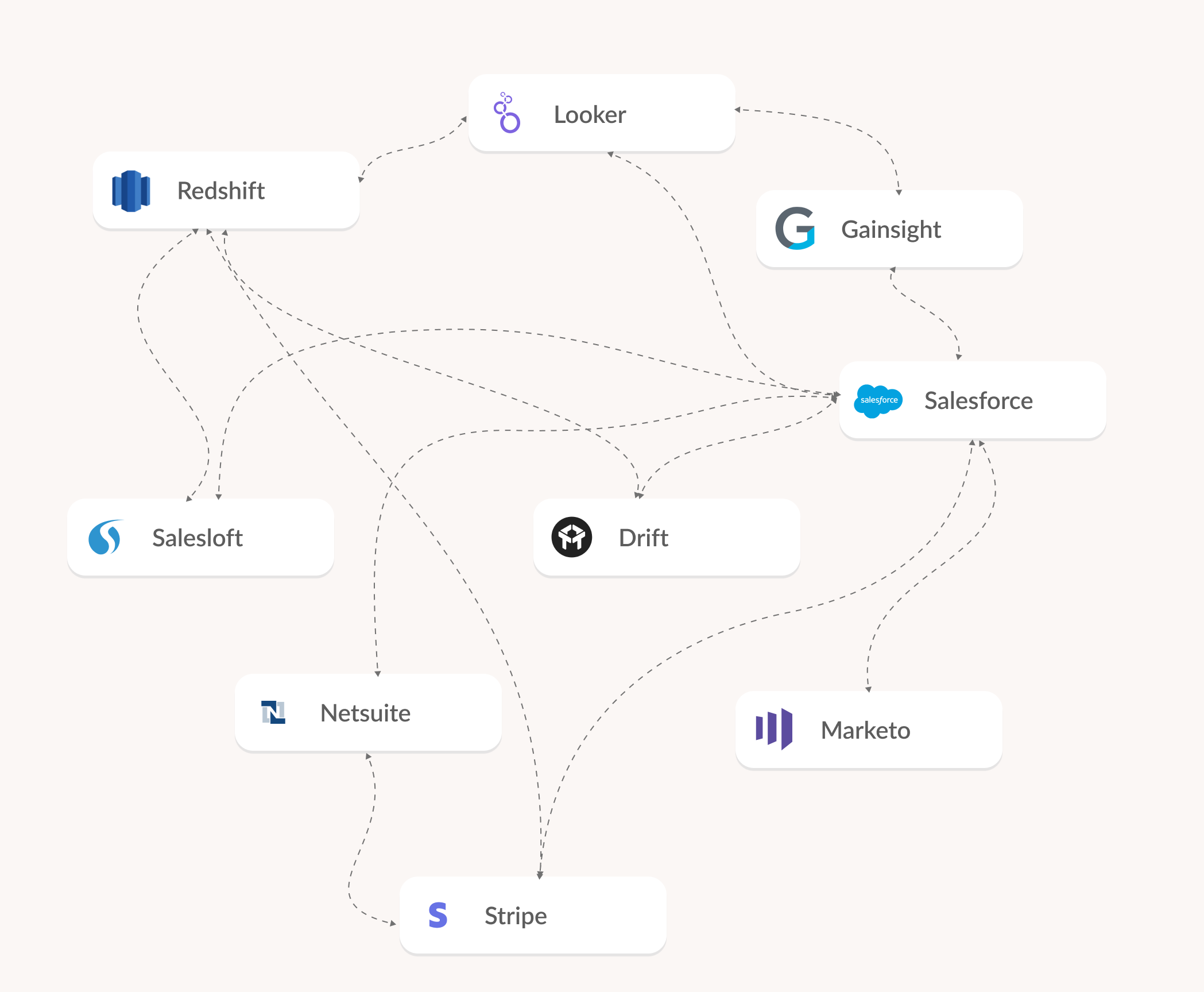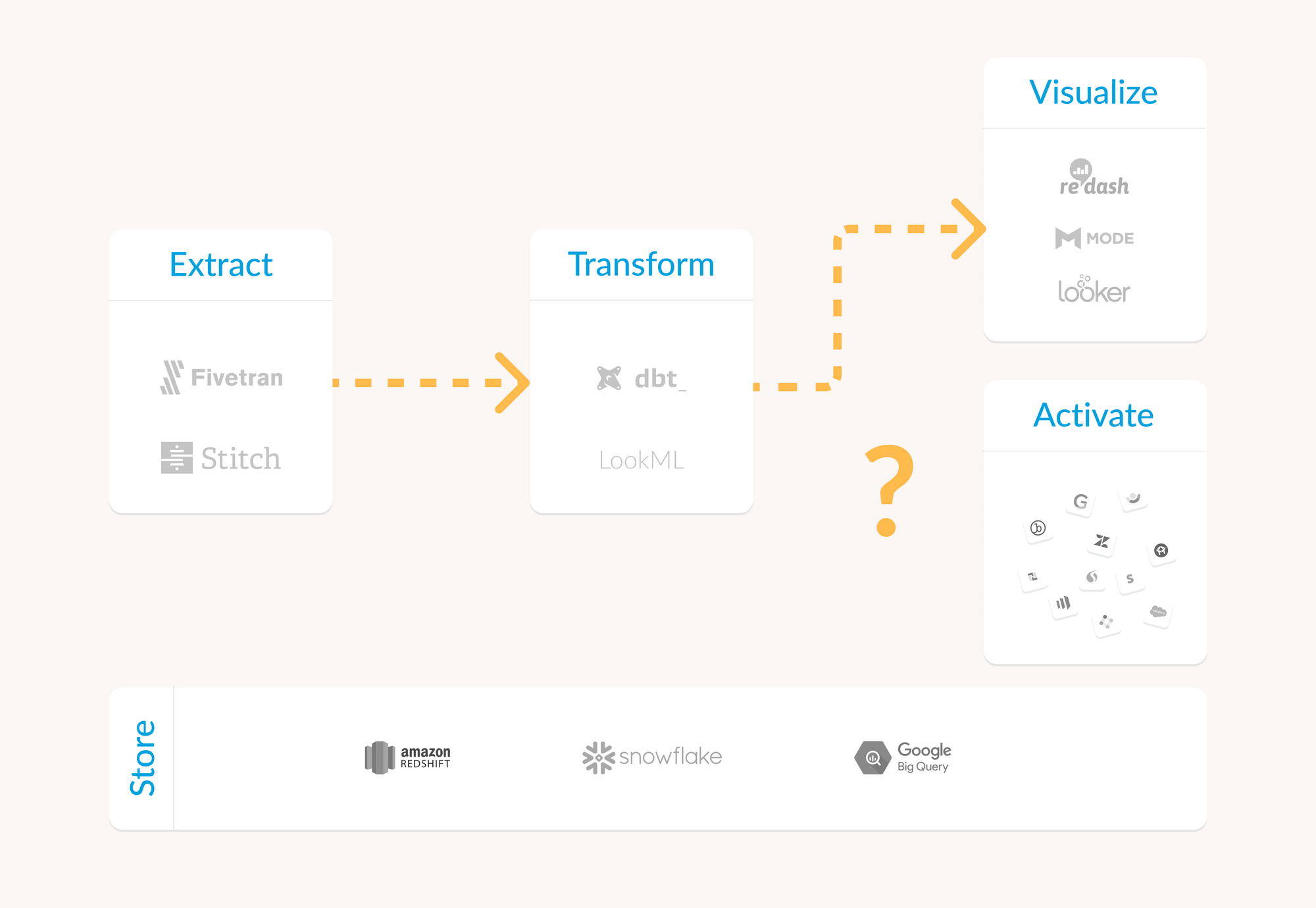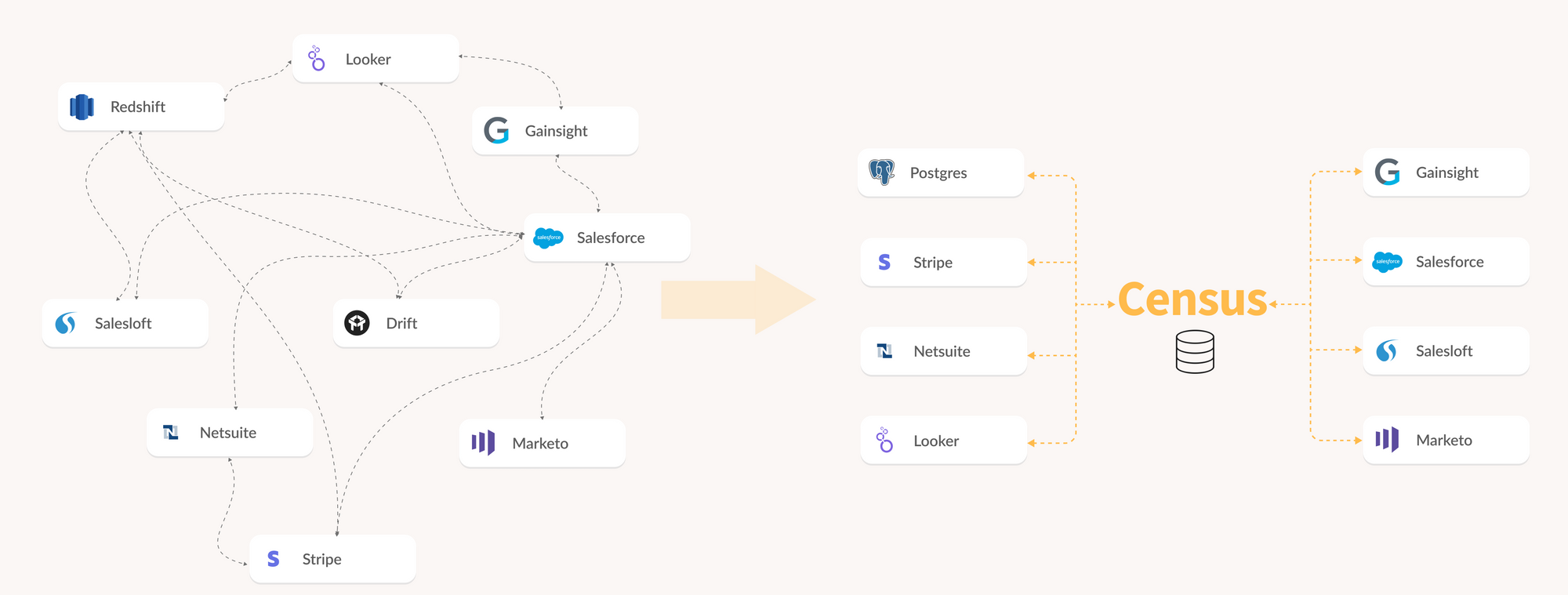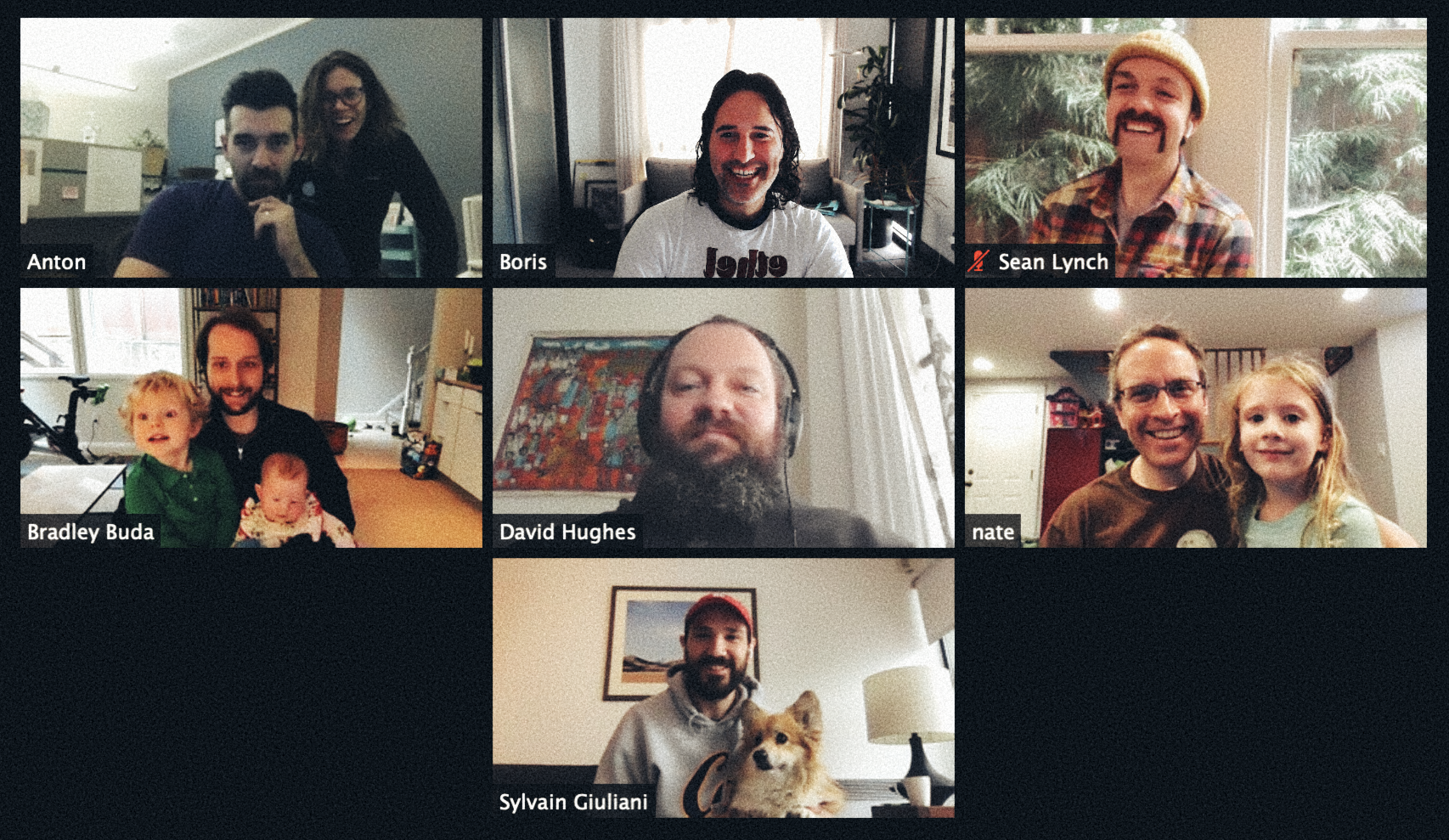I'm excited to announce that Census, the product we've been working on for over a year, is now publicly available! Census lets you sync your customer data from a data warehouse to all your business tools. It's designed for business ops teams that want to leverage data without relying on engineering.
We are also excited to share that we've raised over $4.3 million in seed funding, led by David Ulevitch at Andreessen Horowitz (a16z), with participation from great angel investors like SV Angel, Adam Gross (ex-CEO of Heroku), Ryan Petersen (CEO of Flexport), Fritz Lanman (CEO of ClassPass), Max Mullen (Co-Founder of Instacart) and Alex MacCaw (CEO of Clearbit).
We decided to tackle this problem after years of frustration with customer data being silo'ed in different applications.

The number of tools we use in every job has exploded. The sales and revenue ops teams on our platform have over a dozen tools that all touch customer data such as Outreach, Salesloft, Salesforce, Pipedrive, Marketo, Pandadoc, Stripe, Yesware, Conga, etc. They've been valiantly trying to tie these systems together with point-to-point integrations, but this "spaghetti infrastructure" becomes a maintenance nightmare when you want to add something new, or worse, when something goes wrong. And once your tools are automatically reaching out to customers on your company's behalf, the margin for error is vanishingly small.
To combat this data sprawl, today's best of breed companies use cloud data warehouses like Snowflake that can automatically scale based on usage. They combine that warehouse with tools to ingest data like Fivetran & Stitch to bring all their raw SaaS data into one place. Finally, tools like dbt allow analytics teams to build data models that end up as reports in BI dashboards.

The missing piece is operationalizing that data for the rest of the business. BI reports are great, but the data pipeline can't end there: companies need to bring these insights directly into the marketing, sales, success, and support applications where the business lives and breathes.
Census is this missing piece.

Census connects directly to your data warehouse and syncs data into apps like Salesforce, Marketo, and Google Sheets to help customer success, sales, and marketing be more effective.
We provide a simple interface to control how data is mapped and how frequently it’s synced. Users can transform their data using SQL or tools like dbt. All of these pipelines are automatically monitored so users can uncover anomalies before the business is impacted.
We're launching today with support for all the major cloud data warehouses (Redshift, Snowflake, BigQuery, and Postgres). We also support a dozen app integrations and more are on the way.
We've been lucky to work with some great early customers like Figma, Notion, and Clearbit. Here's some examples of how these product-led SaaS companies have been using Census to drive better operations:
- Improving Customer Success with User & Account activity. By syncing product activity metrics into Salesforce, CS teams build native reports & alerts to track expansion/churn.
- Driving new sales with Product-Qualified Leads. Ops teams set up rules (combining activity & 3rd party signals) to discover potential sales accounts from aggregated freemium users and automatically sync these into a CRM as new leads. They also highlight the most active users in each lead/account so sales can prioritize who to call.
- Building personalized marketing campaigns. By merging product, support, and sales data, marketing teams build segments of users who should hear about new features/offers without bombarding the whole user base (e.g. notifying only users who experienced a pain point). As a bonus, they're able to send these automated emails "from" the internal account owner, which is synchronized via Census.
“Our sales people don’t want to look at 10 different tools to understand what our users are doing. The system we’ve built with Census brings the data right to their fingertips so they can focus and spend more time with customers.” - Kyle Parrish Head of Sales @ Figma
Our ultimate goal is to help data & ops become more agile by building a central customer data hub that enables orchestration at scale. With Census, analysts can focus on building shared data definitions while ops teams can orchestrate all the business tools using clean & consistent data. All without having to wait on custom engineering.

We're excited to share Census with the world and kick off the next step in our journey even amidst these difficult and uncertain times. In lieu of a party, please enjoy this digital confetti 🎉 and come say hi at getcensus.com. We'd love to hear from you.

















